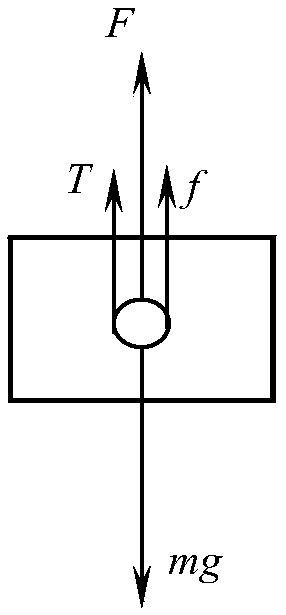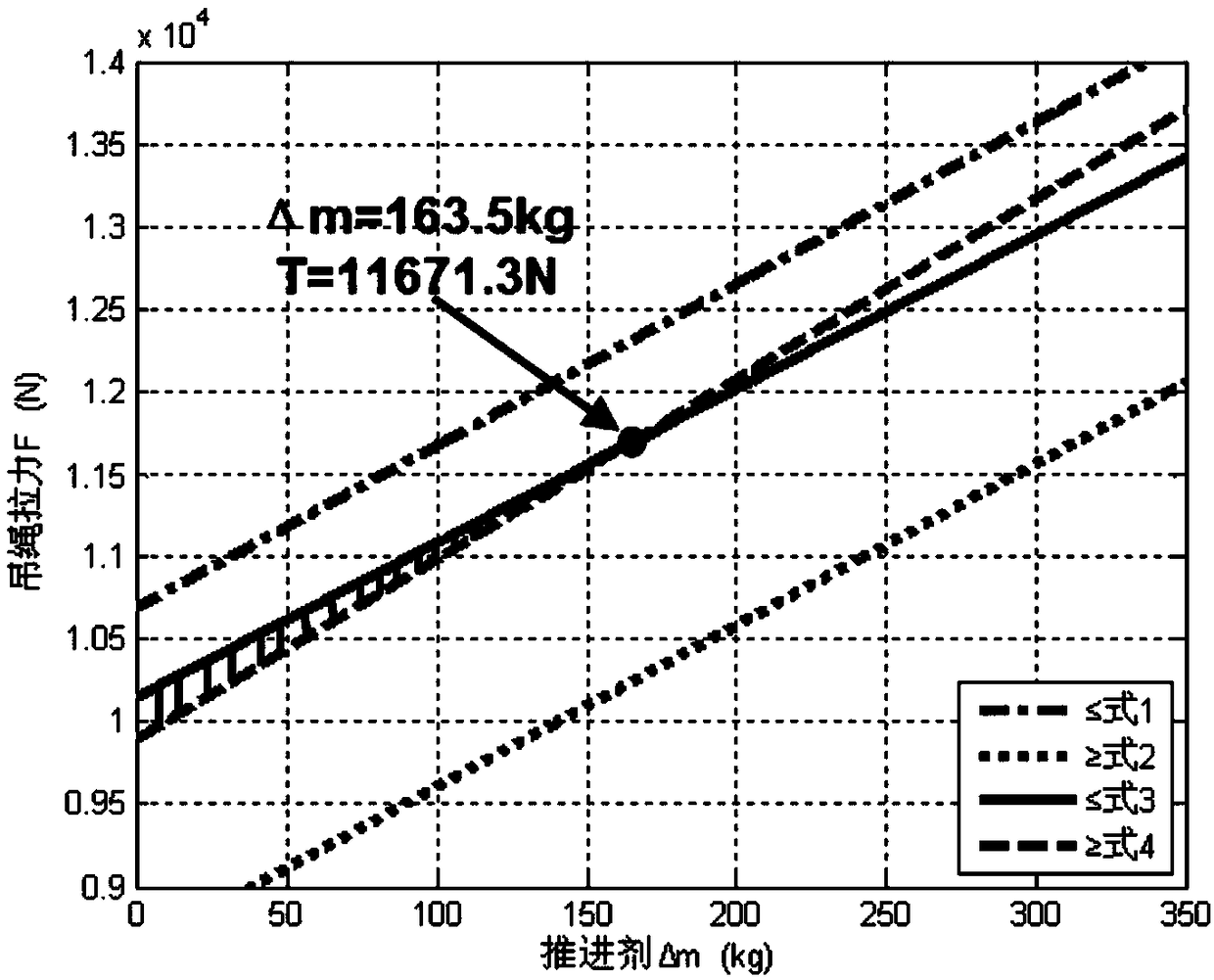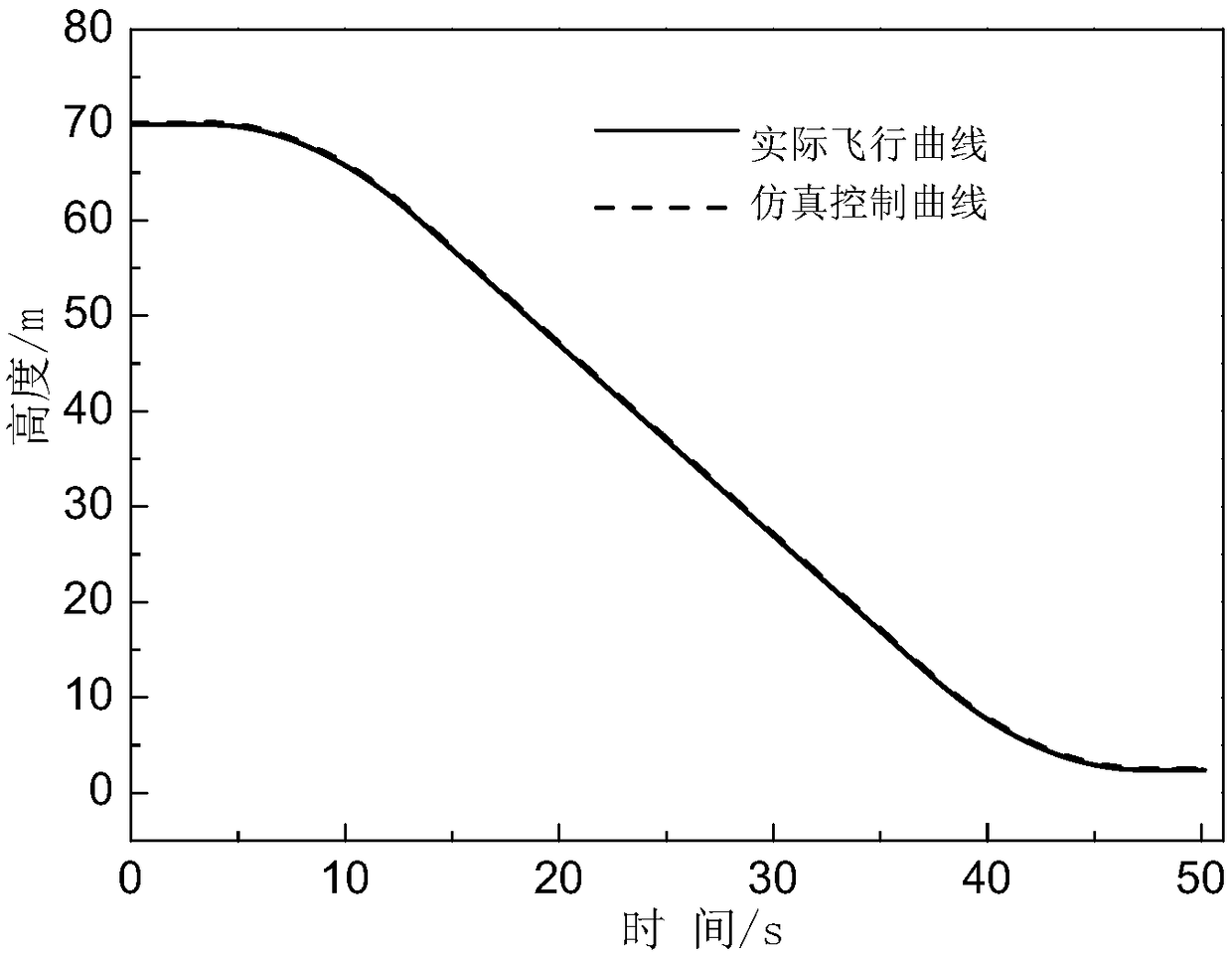Method of simulating stress state of detector in soft landing test
A technology of stress state and simulation method, applied in the field of deep space exploration, can solve the problems that the soft landing verification test of the detector cannot be directly applied
- Summary
- Abstract
- Description
- Claims
- Application Information
AI Technical Summary
Problems solved by technology
Method used
Image
Examples
Embodiment 1
[0026] In this embodiment, by analyzing parameters such as the quality of the detector, the acceleration range of the soft landing flight process, the actual thrust output range of the engine ground environment, and the interference force in the detector ground test, the requirements for the pulling force of the sling are determined, and the detector is assisted by the pulling force of the sling. The stress state is consistent with the real soft landing process, which can satisfy the motion simulation of the probe in the ground soft landing test. A method for simulating the stressed state of a detector in a soft landing test, comprising the following steps:
[0027] Step 1: Use the sling to provide pulling force for the detector, and obtain the engine thrust T of the detector under different force states in the soft landing test of the detector x Simulated acceleration a' with detector down 下 , upward simulated acceleration a' 上 .
[0028] It should be noted that the diff...
Embodiment 2
[0044] Based on the above embodiments, the method for simulating the force state of the detector in the soft landing test of the present invention will be introduced in detail below by taking the soft landing verification test of Chang'e-3 on the lunar surface as an example.
[0045] Based on the soft landing dynamics design on the lunar surface, the upward and downward motion accelerations of the probe during the soft landing process are respectively a 上 =1.1m / s 2 、a 下 =0.47m / s 2 .
[0046] Determine the thrust output range T of the engine in the ground state according to the engine thermal test run in the ground environment min =630N,T max =2710N.
[0047] According to the cross-sectional area of the detector and the speed of movement, it is estimated that the maximum interference effect such as wind resistance in the test is 25N, and the dry mass of the detector is m 0 The design is 1180kg.
[0048] Solve the inequalities (1)~(4) according to the constraint formula...
PUM
 Login to View More
Login to View More Abstract
Description
Claims
Application Information
 Login to View More
Login to View More - R&D
- Intellectual Property
- Life Sciences
- Materials
- Tech Scout
- Unparalleled Data Quality
- Higher Quality Content
- 60% Fewer Hallucinations
Browse by: Latest US Patents, China's latest patents, Technical Efficacy Thesaurus, Application Domain, Technology Topic, Popular Technical Reports.
© 2025 PatSnap. All rights reserved.Legal|Privacy policy|Modern Slavery Act Transparency Statement|Sitemap|About US| Contact US: help@patsnap.com



